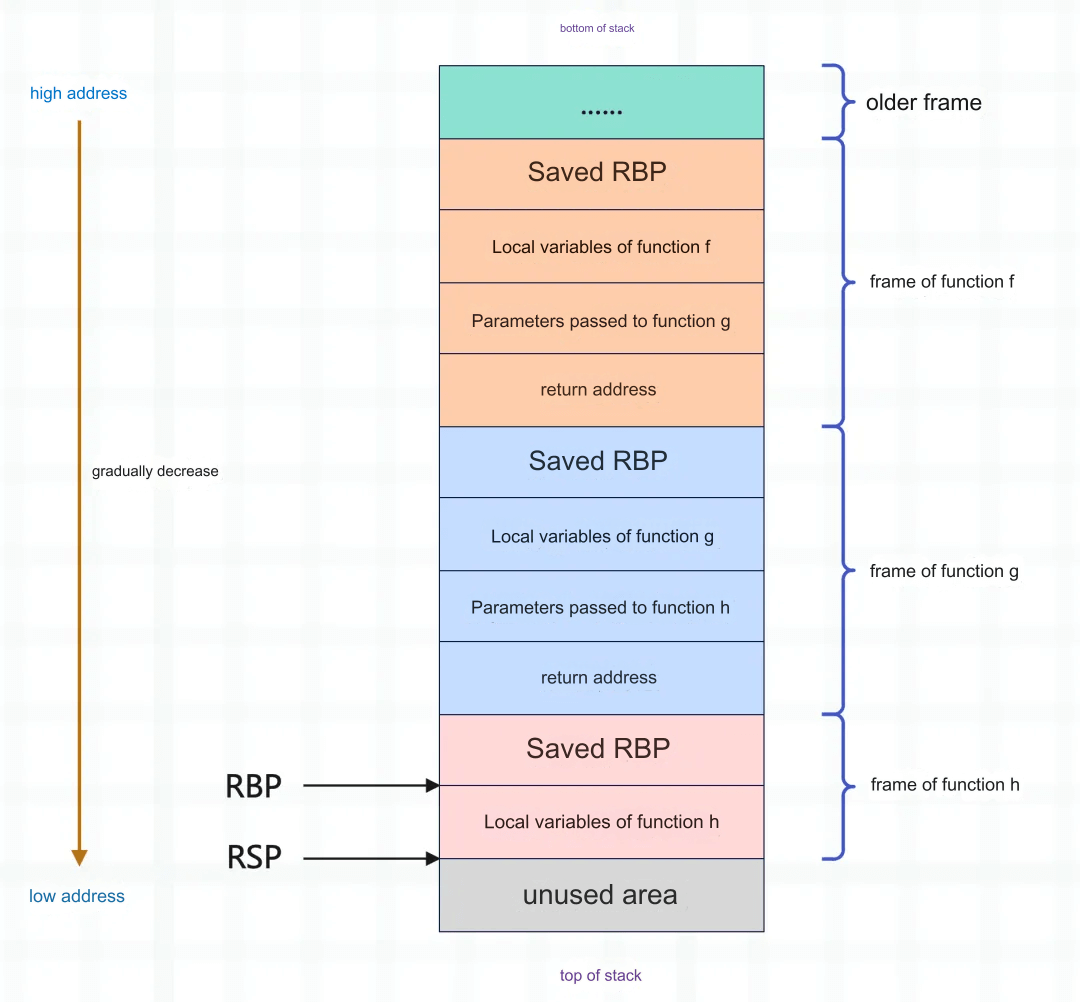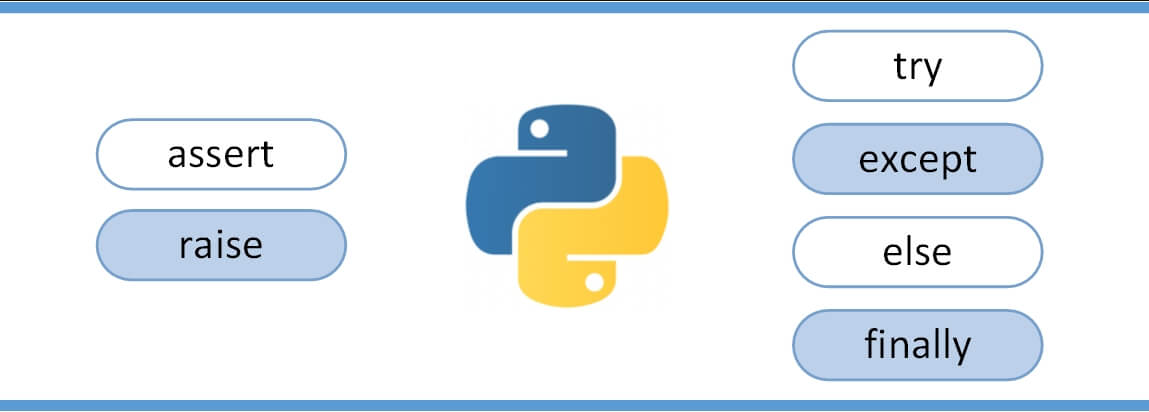The TIOBE December Programming Language Index is out, with Python leading as the top candidate for the "Programming Language of the Year" award thanks to its remarkable 10% growth. Discover how AI advancements and large models have contributed to Python's rise, alongside insights into other programming languages and trends in 2024.
The TIOBE Programming Language Index for December has been published! Let's explore the latest changes that developers should take note of this month.
Python's 10% Growth Makes It the Top Candidate for Programming Language of the Year
As the year draws to a close, we reflect on significant breakthroughs in AI technology across multiple fields. These advancements have driven progress not only in large models but also in generative AI, intelligent agents, hardware technologies, and industry applications.
In the realm of large models, OpenAI introduced GPT-4o, o1, and Sora, while Google launched Gemini 1.5 and the generative video model Veo. Companies like Meta and Anthropic followed with optimized models showcasing stronger performance in multimodal capabilities and generative tasks, solidifying the foundation for the commercial application of large models.
On the hardware front, NVIDIA's "Blackwell" chip significantly boosted computational efficiency, providing robust support for increasingly large AI models and real-time inference demands.
Domestically, Baidu's "Wenxin," Alibaba's "Tongyi," Huawei's "Pangu," along with foundational models like Tiangong and Doubao, have shown impressive performance. These models are being applied in finance, healthcare, education, and manufacturing, enhancing industry efficiency and service quality.
The progress in large models and AI technology has also driven the adoption of Python. According to the latest TIOBE December rankings, Python's usage increased by 10% over the past year. Widely employed in machine learning and data science, Python has been an essential tool for large model development. Its simplicity, ease of use, and rich ecosystem make it a key player in model training and application development.
TIOBE CEO Paul Jansen predicts that Python is highly likely to win the coveted "Programming Language of the Year" award next month, thanks to its 10% growth rate. This award is given to the language with the highest increase in TIOBE index scores.
By comparison, Java and JavaScript ranked second and third in growth, with year-on-year increases of 1.73% and 1.72%, respectively. While this is positive, it pales in comparison to Python's massive leap in 2024.
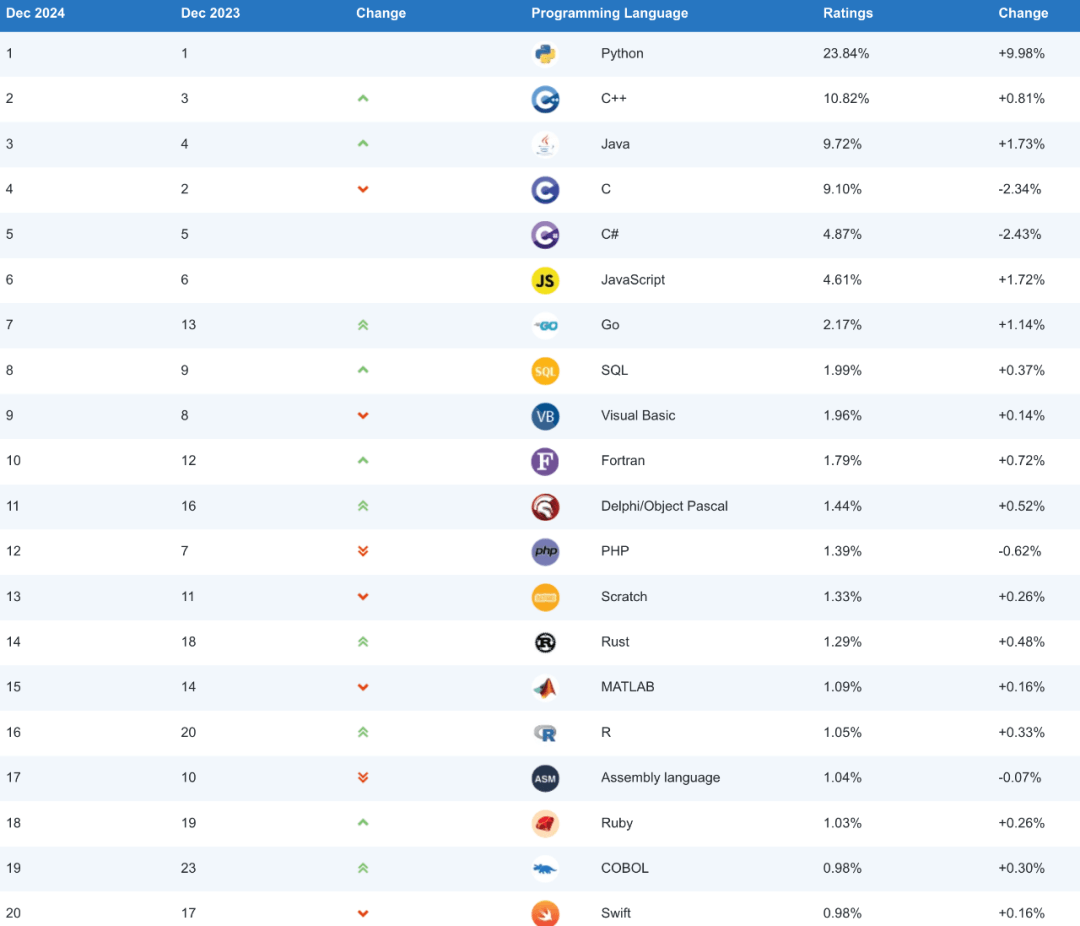
However, Paul Jansen also noted potential challenges for Python, including the possibility of an AI bubble bursting and a rising demand for high-performance languages, which may lead to a stagnation period. The future remains to be seen.
Other Programming Languages
Here are the rankings for programming languages ranked 21-50:
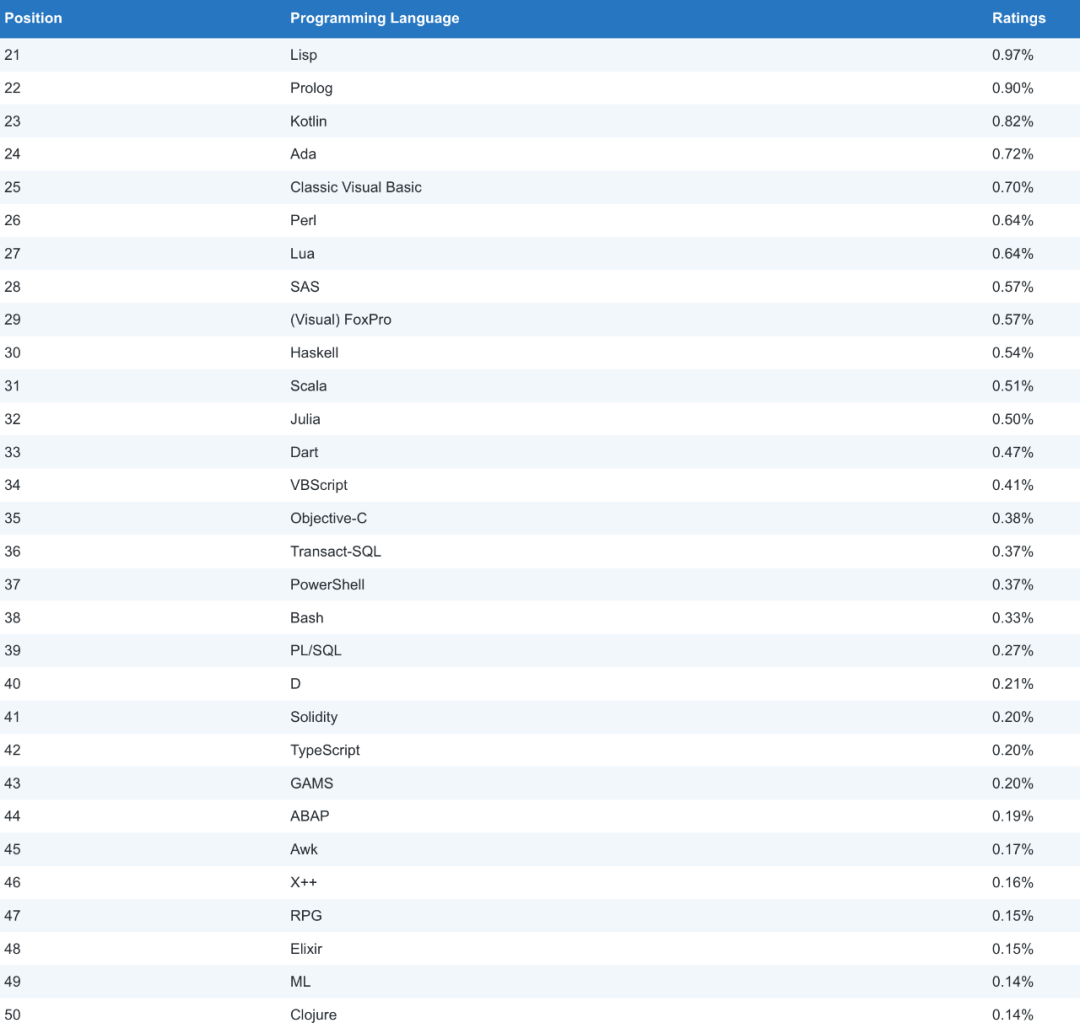
Rankings 51-100 (listed alphabetically due to minimal differences in scores):
4th Dimension/4D, ActionScript, Algol, Apex, APL, CFML, CHILL, Clipper, CLIPS, Crystal, Curl, DiBOL, Elm, Erlang, F#, Forth, Groovy, Hack, Icon, Io, J, JScript, LabVIEW, Ladder Logic, Logo, Modula-2, Mojo, MQL5, NATURAL, Nim, OCaml, Occam, OpenCL, PL/I, PostScript, Q, Raku, Ring, S, Scheme, Smalltalk, Snap!, SPARK, SPSS, Stata, Tcl, Vala/Genie, VHDL, Wolfram, Zig.
TIOBE Index Trends for the Top 10 Programming Languages (2002–2024)

Historical Rankings (1988–2024)
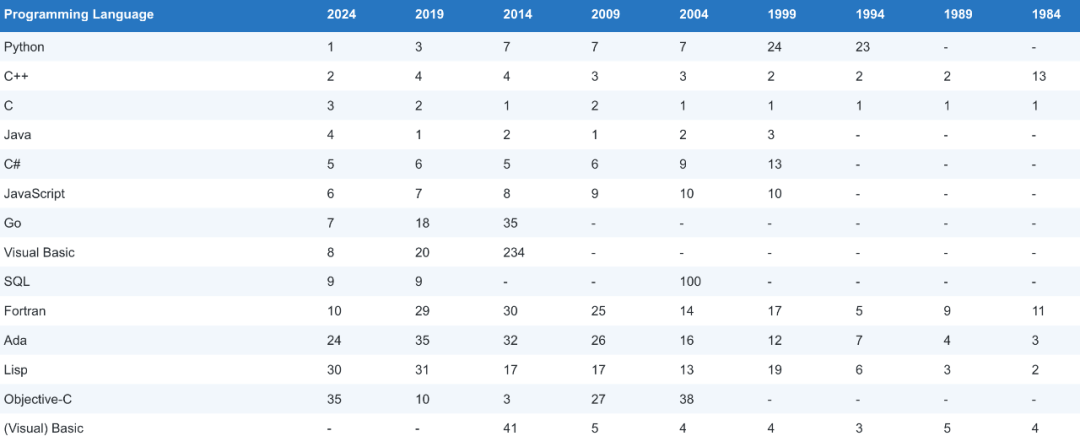
Programming Language "Hall of Fame" (2003–2023)
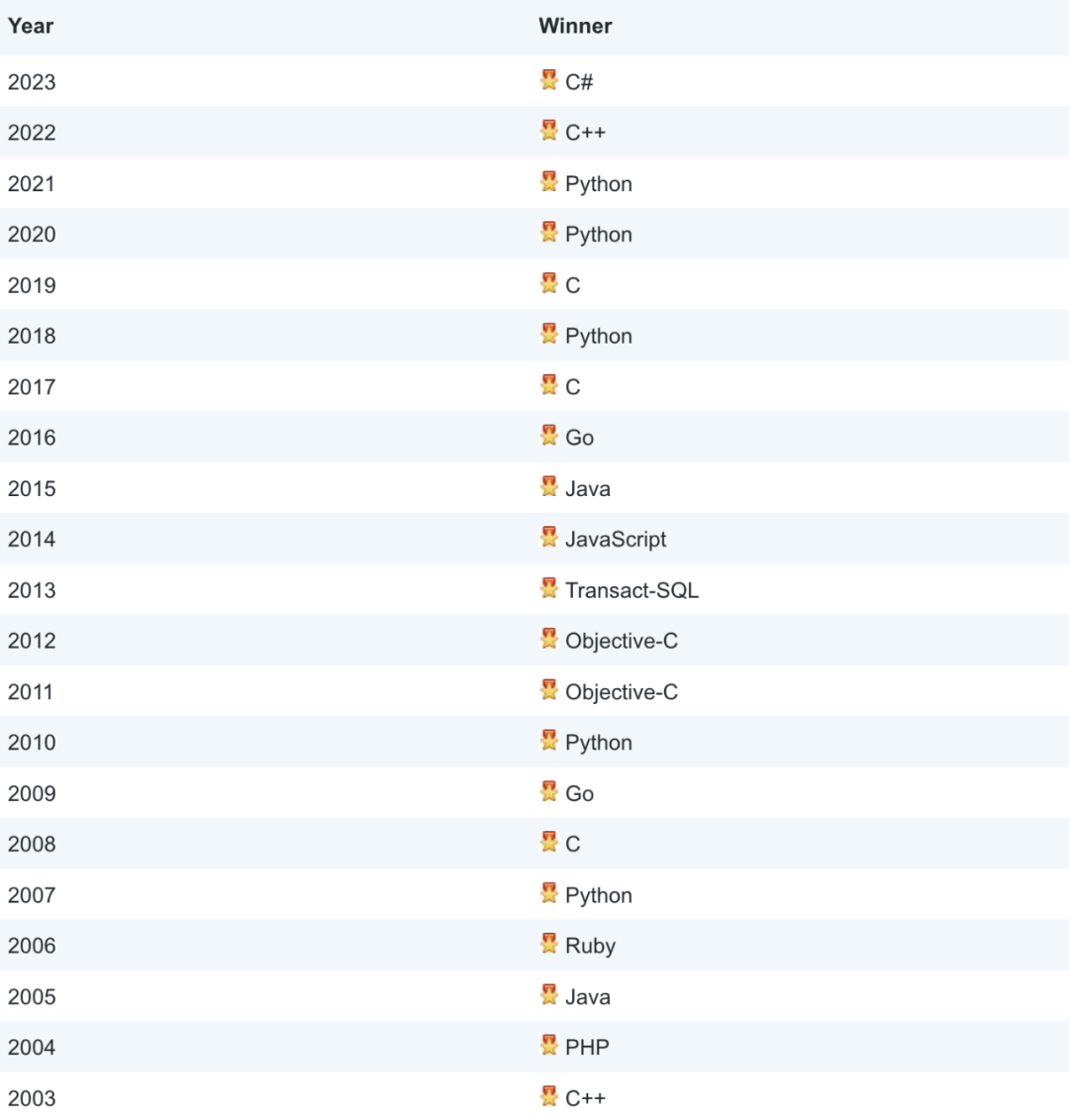
Notes:
The TIOBE Programming Community Index is an indicator of programming language popularity, updated monthly. It ranks languages based on the number of skilled engineers, courses, and third-party vendors worldwide, including data from popular search engines and tech communities like Google, Baidu, Wikipedia, Bing, and Hao 123. Detailed calculation methods are available here.
Please note that this ranking reflects the popularity of a programming language but does not determine its quality or the volume of code written in it. It can help assess whether your programming skills are up-to-date or guide language selection when developing new systems.
